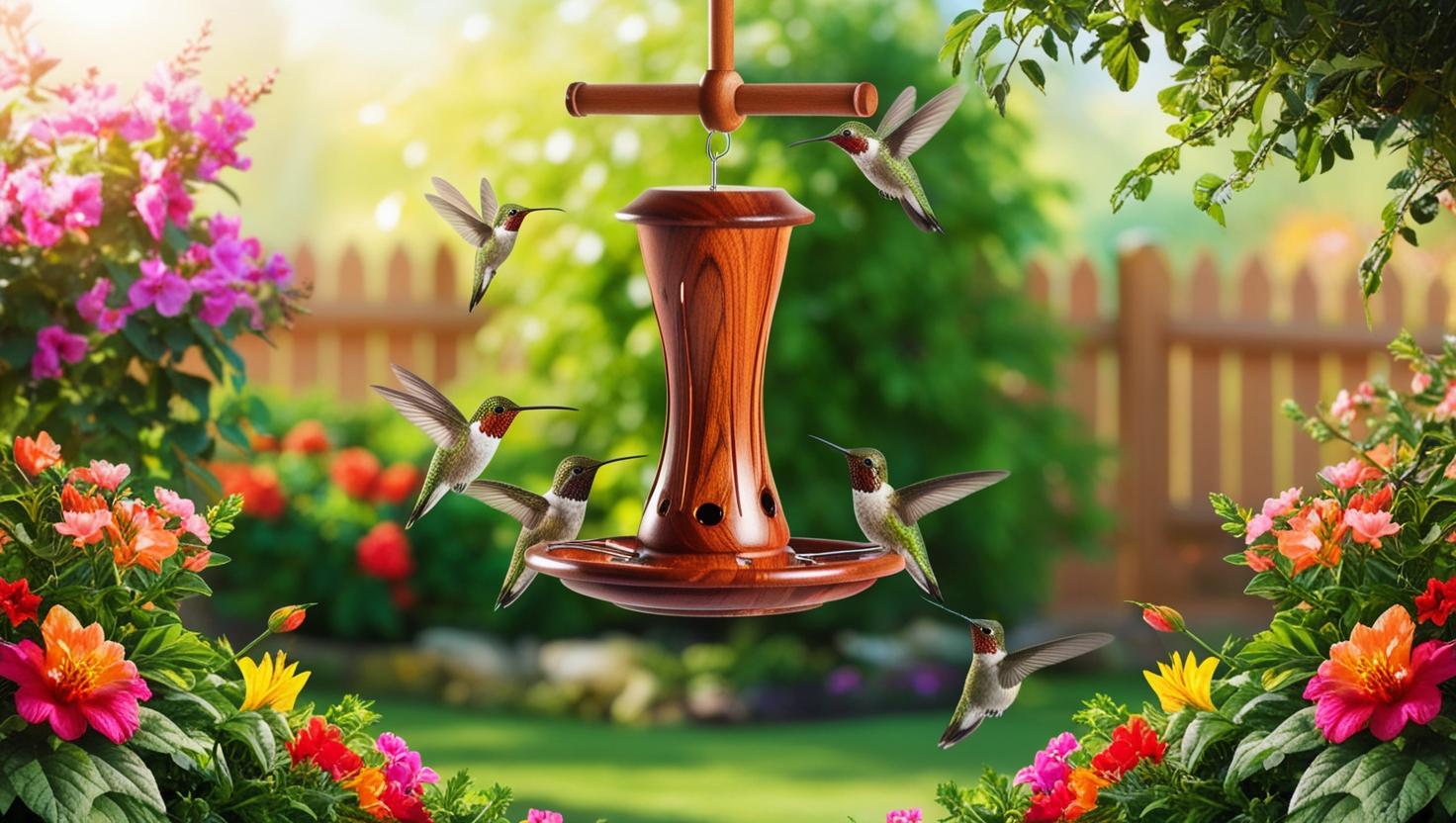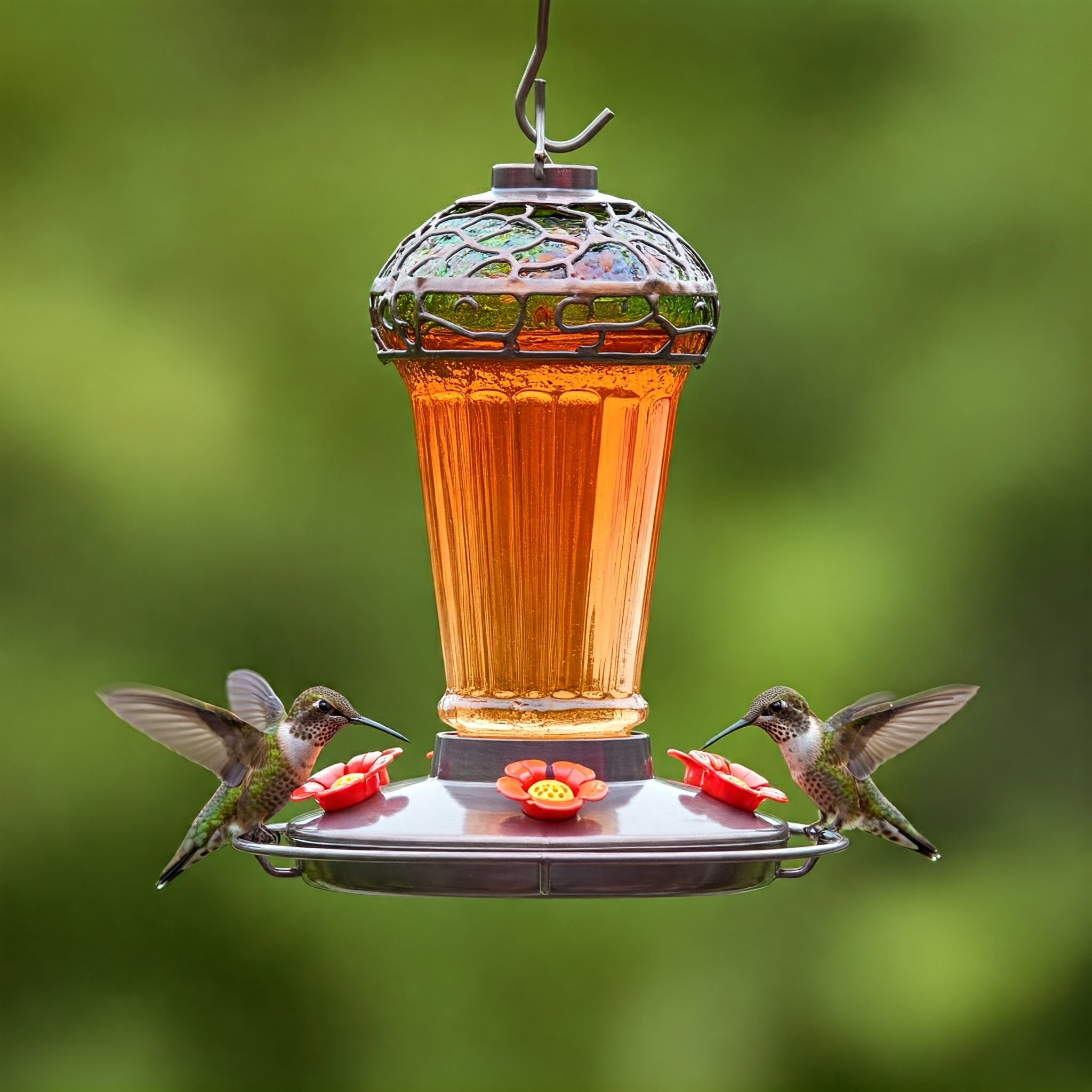Wooden hummingbird feeders have been a popular choice for bird enthusiasts for generations. Crafted from natural materials, these feeders offer a rustic charm that complements any outdoor space. Beyond their aesthetic appeal, wooden feeders provide numerous benefits for both hummingbirds and birdwatchers.
The Beauty of Wooden Hummingbird Feeders
- Natural Beauty: Wooden feeders blend seamlessly with natural surroundings, adding a touch of rustic elegance to gardens and patios.
- Durability: High-quality wooden feeders, especially those made from weather-resistant woods like cedar or redwood, can last for many years with proper care.
- Versatility: Wooden feeders come in various designs, from simple and functional to ornate and decorative.
Benefits of Using a Wooden Hummingbird Feeder
- Attracting Hummingbirds: The natural look and feel of wooden feeders can attract hummingbirds, who are drawn to natural materials.
- Enhancing Outdoor Decor: Wooden feeders can complement various outdoor decor styles, from traditional to modern.
- Eco-Friendly: Wooden feeders are a sustainable choice, as they are made from renewable resources.
How to Choose the Right Wooden Hummingbird Feeder
When selecting a wooden hummingbird feeder, consider the following factors:
- Size and Capacity: Choose a feeder that is large enough to accommodate multiple feeding ports, allowing several hummingbirds to feed simultaneously.
- Material: Opt for weather-resistant woods like cedar or redwood, which can withstand harsh weather conditions.
- Design: Consider the overall design of the feeder, including the number of feeding ports, the shape of the nectar reservoir, and any additional features like perches or ant moats.
- Ease of Cleaning: A well-designed wooden feeder should be easy to clean and maintain. Look for feeders with removable parts that can be easily disassembled and washed.
Tips for Attracting Hummingbirds to Your Wooden Feeder
- Fresh Nectar: Regularly clean and refill your feeder with a fresh sugar-water solution.
- Optimal Nectar Ratio: Use a 1:4 ratio of sugar to water.
- Strategic Placement: Place your feeder in a visible location, away from predators and strong winds.
- Provide a Variety of Flowers: Plant nectar-rich flowers like bee balm, trumpet vine, and salvia to attract hummingbirds.
- Offer a Water Source: Hummingbirds need water for drinking and bathing. Provide a birdbath or a dripping water source.
- Avoid Pesticides: Pesticides can harm hummingbirds and other beneficial insects.
Caring for Your Wooden Hummingbird Feeder
To ensure the longevity of your wooden feeder, follow these care tips:
- Regular Cleaning: Clean your feeder regularly to prevent the growth of mold and bacteria.
- Weather Protection: Consider applying a weather-resistant sealant to protect the wood from moisture and UV rays.
- Storage: During the off-season, store your feeder in a cool, dry place to prevent damage.
The Art of Birdwatching with Wooden Feeders
Beyond the practical benefits, wooden hummingbird feeders can enhance your birdwatching experience. By observing these fascinating creatures up close, you can gain a deeper appreciation for their beauty and behavior. Consider these tips for a more rewarding birdwatching experience:
- Patience and Observation: Take your time and observe the hummingbirds’ behavior. Note their feeding patterns, territorial disputes, and interactions with other birds.
- Photography: Capture stunning photos of hummingbirds using a camera with a telephoto lens or a smartphone with a good camera app.
- Bird Identification: Learn to identify different hummingbird species by their size, color, and behavior.
- Citizen Science: Contribute to scientific research by participating in citizen science projects that involve monitoring hummingbird populations.


